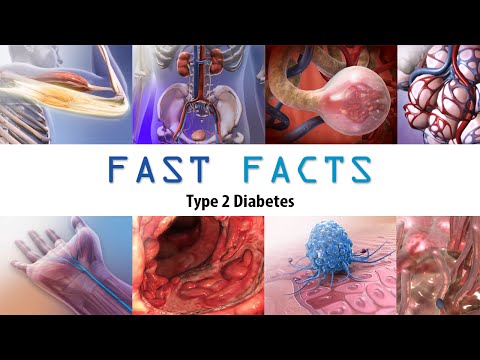Heart Attack Victims: It was on March 3rd 2005 around 7:45 am that I experienced one of my biggest challenges in life. Though it’s been quite a long time, but it still remains ever green in my heart.
How to Perform CPR for Heart Attack Victims

This particular day, I woke up just like every other day, did my 30 minutes jogging and dressed up for work. And in my usual look filled with smiles and anticipation, hoping for the best the day has to offer.
And with courage I hopped in into my car and drove off, only to get stuck in traffic. Just a few minutes later, I heard a heavy shout from behind engulfed by tension and anxiety saying “Can anyone help out with CPR? He’s dying … Anyone…CPR?”
And suddenly I got stuck for the second time, now not in traffic but in my reasoning. This is because few years ago I came across a 15 minutes online tutorial on cardiopulmonary resuscitation (CPR), but I never paid much attention to it.
Twice at once my heart kept beating with my feet growing cold each passing second, and my conscience crucifying me for my inability to offer help to the victim.
While still pondering on my thoughts, a joyful noise was heard from the same direction, and then was I told that the victim has been resuscitated by one of the passer bys. That was when I decided to take the bull by the horn, in order to help save a life.
Since then I’ve equipped myself immensely with the secret behind CPR, from variety of sources which I intend to share with you today.
No doubt you might have heard or read about heart attack, but have not been in a heart attack scene.
But if eventually you get to find yourself near a heart attack victim, what will you do?
Do you call 911 or local medical emergency number?
Do you administer aspirin to the victim?
Or do you begin CPR on the victim?
In this situation, it’s advisable to call your medical emergency and perform the CPR on the victim, while you wait for their arrival.
Though aspirin can be administered to the victim because it helps to avoid blood clots from forming, and it also enhances the blood flow round the victim’s body.
But due to the fact that some people are allergic to it which in different cases leads to body reaction. However administering aspirin requires lots of protocols, in order to avoid body reaction on the victim which at times are very dangerous.
According to case study reports by ndnr, it was revealed that most cases of victims suffering from aspirin reactions, were also due to excessive intake.
And this can’t be detected without series of tests and queries which can’t be obtained during such emergency.
Therefore makes it not an option to administer aspirin to a heart attack victim as first aid treatment, since you can’t ascertain whether he or she is allergic to it or has lots of it her/his system.
To conclude it all, CPR stands out to be the best first aid treatment you should offer to a heart attack victim.
But before we get into how to give CPR to a heart attack victim, it’s vital that we understand what CPR really means.
Then what is CPR?
Cardiopulmonary resuscitation (CPR) is a rescue process administered to a person having difficulty in breathing. This can be caused by variety of reasons like heart attack, drowning and lots of others.
In such a case it’s important that any available person should do CPR on such victim, in order to help the victim normalize his breathing before the arrival of a medical help.

And why should you know CPR?
It’s vital to know CPR because according to a statistic report, it revealed that there are 1.5 million heart attack cases in US each year, with five hundred thousand resulting to death.
And research has also shown that 80% of cardiac arrest happens at home which makes it very important for all to know CPR technique in order to help save a live.
Further report has also shown CPR to be useful due to the constant swallowing of objects by children, ranging from five years and below which often leads to choking. CPR can also be administered to such child.
And now you’ve known all these, you can agree with me that the knowledge of CPR is vital for everyone.
Do you wish to know how to perform CPR on a heart attack patient?
If yes! Then follow these steps carefully.
Step one: Call medical emergency team
As soon as you discover a heart attack victim that is not breathing properly or at all, do not hesitate to call 911. And be sure to give descriptive details about your location using any popular landmark.
Don’t hang up if your call is diverted to an answering machine; rather wait on it till it’s answered. However it’s advised to keep the phone close to you on loud speaker while you attend to the victim.
Step two: Do not panic
Erase any form of anxiety from the victim especially when he/she is still conscious by remaining calm. This is to help prevent him/her from producing more adrenalin due to anxiety and fear.
Though it’s not required of you to do CPR on the victim unless- he/she goes into cardiac arrest (unconscious).
And don’t forget to loosen his/her clothe to help ease his/her breathing.
Step three: Pump the heart
If the victim is still not breathing properly or at all, start a chest compression to help boost the heart pump.
Start by placing both hands one over the other on top of the victim’s chest as shown above, and then press down firmly to allow the center of the victim’s chest move 2 to 2.4 inches inward – and allow the chest to bounce back up.
Repeat this as fast as you can, if possible twice a second for 30 times.
Step four: Provide oxygen

Move the victim’s head backward while lifting the chin. Then close the nose with your two fingers while covering the victim’s mouth with yours, and breathe in into the victim until the chest rises.
Two breaths are recommended with each lasting for a second.
You can then repeat step three and four consecutively, until the victim regains consciousness and a stable breathing.
Don’t give up if the victim doesn’t respond early, perseverance is the only key to achieving a successful CPR.
Conclusion
It’s important to take note of each of these steps with immense concern, and make it part of you. This is to prepare you at all time, in case of any emergency.
It also helps to reduce anxiety and tension when you find yourself in such condition.
Your knowledge of CPR can help to save a life, and who knows it might be the life of your loved one.
About the writer: Tag David is a health and healthy living passionate person, and the co-founder of kitchawoof. He shares his experience and inspiring content on ‘How to perform CPR on a heart attack victim’.







